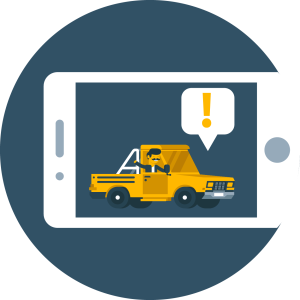What’s the best way to check engine light codes without a scanner?
July 18, 2022

There are numerous ways of getting to a check motor light code or different codes without a scanner or code peruser. Be that as it may, the methodology you pick will rely upon whether your vehicle produces OBDI or OBDII codes- car dealer seo .
1. Utilizing The Ignition Key
The start key strategy is the most straightforward to acquire OBDI and OBDII codes.
Here is a straightforward bit-by-bit guide:

Stage 1: Turn The Ignition Key
Switch ON and OFF the start key without running the motor. Do this on different occasions (3-5 times for the most part) and guarantee you quit flipping your critical in the ON position.
The specific number of times you want to turn your start key relies upon your car model. In any case, there’s a straightforward stunt. Notice the dashboard behind your guiding wheel, and assuming all lights there enlighten, you can quit turning the start key.
Stage 2: Check Your Dashboard
Just after the scramble illuminates come, they’ll switch off, aside from one — generally the help motor light. Presently carefully notice it.
If you see the odometer showing the motor light codes, note down each inconvenience code (DTC). This technique for the most part works with more current vehicles or vehicles with the OBDII framework.
Nonetheless, if rather than the odometer shows, your check motor or administration motor light starts to heartbeat or glimmer, then, at that point, your vehicle is OBD1. What’s more, the blaze made by the motor light is your shortcoming code.
How might you peruse the code?
Perusing a code from a check motor light glimmer can be interesting. Every motor light heartbeat addresses a digit, and the delay between the beat demonstrates the partition between the digits. A zero is addressed with a fast motor light blaze.
For instance, vehicle shortcoming Code 32 will resemble this:
beat, beat, beat, PAUSE, beat, beat (3 and 2 = 32).
Stage 3: Note And Interpret The Check Engine Codes
Note the check motor light codes as they streak. Then, at that point, look at your repair manual for code portrayals and grasp the specific issue.
2. Utilizing The Odometer
Here are the basic moves toward the following:
Stage 1: Odometer Reset
Press the odometer’s Trip and Reset buttons while turning the start key ON. In the wake of turning the key ON, discharge the odometer Reset and Trip buttons to check to assume the Diagnostic Trouble Code or DTC shows up on the odometer shows.
Stage 2: Odometer Reset And Multiple Ignition Key Flips
If the reset technique doesn’t work, attempt once more. This time press the odometer Trip and Reset button and switch the start key ON, OFF, and afterward ON once more.
Finishing the activity in the ON position is significant.
Then, at that point, discharge the odometer Trip and Reset buttons. Check the computerized odometer screen; the difficulty code ought to show up. Imagine a scenario in which the mistake codes don’t show up. This likely method of your car doesn’t uphold OBDII codes.
Stage 3: Use A Paper Clip Or Jumper Wire
If your car upholds OBD1 and doesn’t answer the technique referenced over, there’s one more method for getting your motor code — utilizing a paper clasp or jumper wire. To begin with, guarantee your car is switched off. Then, at that point, find the OBD port under the guiding wheel. For the specific area, go through your proprietor’s manual.
You’ll see two terminals on the analytic connector. Interface them with a paperclip or jumper wire. That’ll make a shut circuit. Then turn the start to ON without wrenching your vehicle and the motor light will streak, showing your difficulty code. The blaze will show up similarly as referenced in the start key technique — heartbeats and stops.
